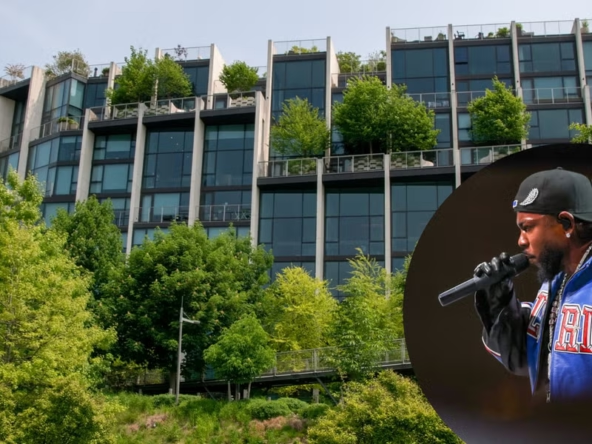I feel about my home the way I feel about my music: You have to take chances,” says Lionel Richie. “When I wrote All Night Long’ as well as Three Times a Lady,’ it was dangerous, because at the time black guys were singing neither calypso songs nor waltzes. But since you only get one shot at life, let’s make it a challenge. That’s how I feel about this house.”

“If I can’t find a lyric, I walk to the end of the garden and say, ‘OK, God, they’re expecting me to be famous; I have things being delivered for the house tomorrow; I need a second verse,’” Richie says. At the rear of the 17,000-square-foot house are a series of limestone terraces, a swimming pool and a stone poolhouse. The lush grounds feature cypress and magnolia trees and ‘Iceberg’ roses.
And a challenge is exactly what the singer-songwriter got when he snapped up the 28-room mansion, built in 1929 for Carrie Guggenheim by architects Harry Koerner and William J. Gage on a knoll overlooking the Los Angeles Country Club. “It’s a house you don’t find anywhere, much less 10 minutes from the center of Beverly Hills,” he says of the Italian Renaissance Revival structure that hadn’t been updated for almost a decade.
“Everybody looked at it and had the same response: Beautiful, but we don’t want to do the work.’ And in fact I was reluctant,” he admits. It was his then wife, Diane, who said, “This is fabulous.”
And may never be, since Richie admits that creating music and homes are simultaneous pleasures. The first job for the couple, who remain “great friends,” Richie says, was simply uncovering the splendid bones under the kitsch: the gorgeous wood floors, pristine due to years buried under white carpeting; the entrance’s luminescent limestone walls, darkened—and hidden—under varnish. “A house is like a human being,” muses Richie. “There’s something wonderful about an 80-year-old with wisdom, but what did it look like when it was 19? What was the inspiration when the house was first built? That white stone was the house’s youth.
via@rchitecturaldigest



